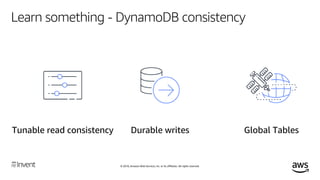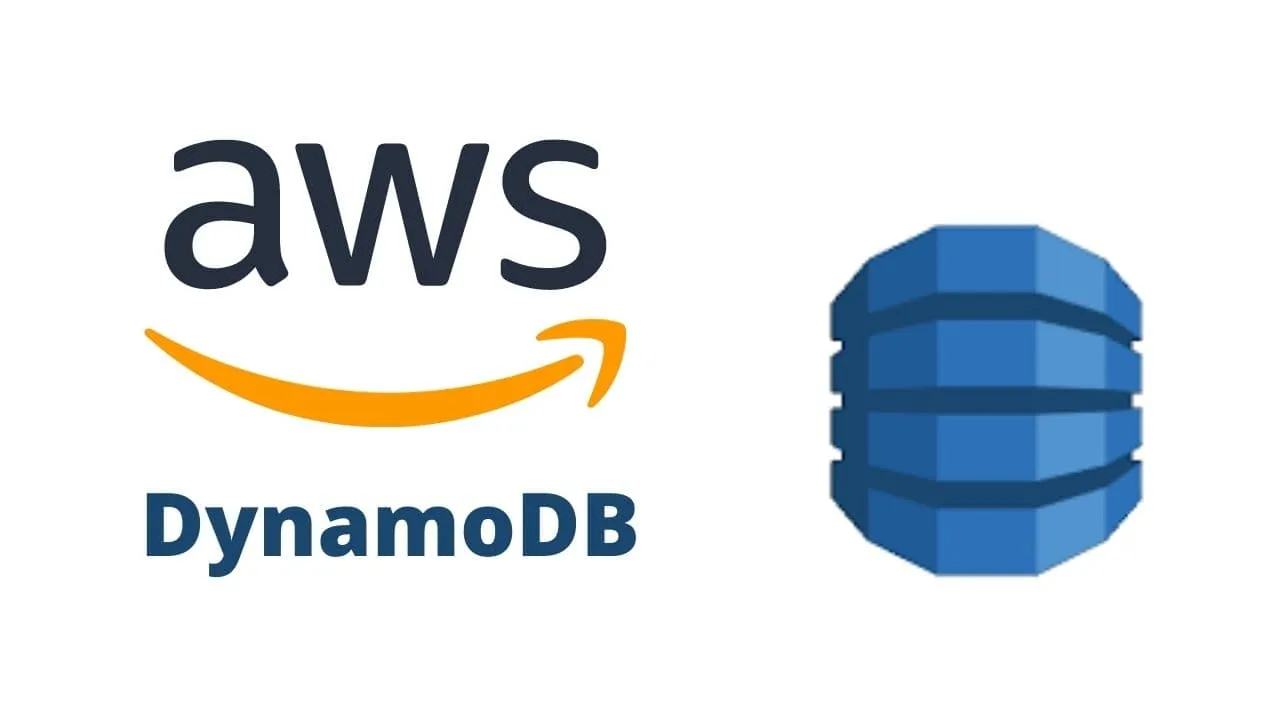What is DynamoDB by Amazon?
DynamoDB by Amazon is a fully managed NoSQL database service that offers quick and predictable performance with seamless scalability. As a NoSQL database, DynamoDB Amazon supports key-value and document data structures, making it an ideal choice for applications requiring high performance, low latency, and large workloads. DynamoDB is designed to handle massive data volumes, delivering single-digit millisecond latency at any scale, which makes it a popular choice for businesses and developers worldwide.
Key Features and Benefits of DynamoDB
Amazon DynamoDB is a powerful, fully managed NoSQL database service that offers numerous key features and benefits. Its primary advantages include:
- Scalability: DynamoDB Amazon supports automatic scaling, allowing you to handle massive traffic with ease. You can effortlessly increase or decrease your table’s capacity without any downtime, ensuring your application’s performance remains consistent even during peak usage.
- Flexibility: DynamoDB supports both key-value and document data models, enabling you to store and retrieve data in various formats. This flexibility simplifies application development and data management.
- Security: DynamoDB provides robust security features, such as encryption at rest, which secures your data from unauthorized access. Additionally, it offers fine-grained access control, allowing you to manage permissions at various levels, including tables, items, and attributes.
- Backup capabilities: DynamoDB offers continuous backups and on-demand backup options, ensuring your data remains safe and recoverable. You can easily restore data to any point in time, minimizing data loss risks.
- Cost-effectiveness: DynamoDB follows a pay-per-use pricing model, enabling you to only pay for the resources you consume. This cost-effective approach helps you save on infrastructure and maintenance costs.
- Ease of use: DynamoDB integrates seamlessly with other AWS services, simplifying the setup and management process. You can use the AWS Management Console, AWS CLI, or SDKs to interact with DynamoDB, making it accessible for developers of all skill levels.
How to Use DynamoDB: A Step-by-Step Guide
Amazon DynamoDB is a versatile and feature-rich NoSQL database service. To get started with DynamoDB, follow these steps:
- Create a table: In the AWS Management Console, navigate to the DynamoDB service. Click on “Create table” and provide a name and primary key information. The primary key can be a partition key or a partition key with a sort key, depending on your data access patterns.
- Define primary keys: Primary keys are unique identifiers for each item in a table. The partition key, also known as the hash key, evenly distributes data across multiple partitions. The sort key, or range key, allows you to order data within a partition. Properly defining primary keys is crucial for optimizing performance and ensuring data consistency.
- Set up provisioned throughput: DynamoDB uses a provisioned throughput model, allowing you to specify the read and write capacity units for your table. This setup ensures predictable performance and prevents resource contention. You can adjust these settings based on your application’s requirements.
- Work with data items and attributes: Data items are individual records in a table, and attributes are the individual pieces of data within those records. You can use the AWS Management Console, AWS CLI, or SDKs to add, update, delete, or query data items and attributes. DynamoDB supports various data types, including strings, numbers, binary data, and complex data structures like lists and maps.
- Use AWS Management Console, AWS CLI, or SDKs: DynamoDB offers multiple interfaces for interacting with the service. The AWS Management Console provides a user-friendly graphical interface, while the AWS CLI and SDKs allow for automation and scripting. Choose the interface that best suits your needs and expertise.
Real-World Applications of DynamoDB
Amazon DynamoDB is a powerful and flexible NoSQL database service that has found its way into various real-world applications and use cases. Its ability to handle large workloads with high performance and low latency makes it an ideal choice for many industries and businesses. Here are some examples of companies that use DynamoDB and their success stories:
- Netflix: The popular streaming service uses DynamoDB to store and manage metadata for millions of movies and TV shows. By leveraging DynamoDB’s scalability and performance, Netflix ensures seamless content delivery to its global user base.
- Airbnb: The vacation rental platform utilizes DynamoDB for various use cases, including storing reservation data, managing user information, and handling session data. Airbnb benefits from DynamoDB’s flexibility, security, and backup capabilities, ensuring a smooth user experience.
- Duolingo: The language-learning platform relies on DynamoDB to manage user data, course content, and progress tracking. By using DynamoDB, Duolingo can efficiently scale its database to accommodate millions of users while maintaining high performance and low latency.
- Expedia: The travel company uses DynamoDB to store and manage critical data, such as flight schedules, hotel availability, and user bookings. Expedia takes advantage of DynamoDB’s backup capabilities and security features to ensure data integrity and protect user information.
These are just a few examples of how DynamoDB Amazon is being used in the real world. Its versatility and robust feature set make it an excellent choice for gaming, IoT, mobile, web, ad tech, and financial services, among other industries and applications.
Best Practices for DynamoDB Optimization
Amazon DynamoDB is a powerful and feature-rich NoSQL database service, but to get the most out of it, you need to follow best practices for optimization. Here are some tips to help you optimize DynamoDB performance:
- Choose the right partition key: The partition key is a critical component of DynamoDB’s performance. Choose a key that distributes data evenly across partitions and supports your access patterns. Avoid “hot” partitions by ensuring that items with the same partition key are evenly distributed.
- Manage capacity: DynamoDB uses provisioned throughput to ensure predictable performance. Monitor your read and write capacity usage and adjust as needed. Consider using auto-scaling to automatically adjust capacity based on demand.
- Use secondary indexes: DynamoDB supports global and local secondary indexes, which allow you to query data using an alternate key. Use secondary indexes to optimize read-heavy workloads and support more complex access patterns.
- Monitor and troubleshoot: Use DynamoDB’s built-in monitoring and metrics to identify performance issues and troubleshoot problems. Monitor read and write capacity usage, latency, and error rates to ensure optimal performance.
- Proper data modeling and access patterns: Proper data modeling and access patterns are crucial for optimizing DynamoDB performance. Design your data model and access patterns to minimize the number of requests and ensure even data distribution.
By following these best practices, you can ensure that your DynamoDB tables perform optimally and provide the high performance and low latency that you expect. Remember that DynamoDB is a flexible and scalable database service, so don’t be afraid to adjust your data model and access patterns as your needs change.
DynamoDB vs. Other NoSQL Databases: A Comparative Analysis
Amazon DynamoDB is a popular NoSQL database service, but how does it compare to other NoSQL databases like MongoDB, Cassandra, and Riak? Here’s a comparative analysis of DynamoDB and other NoSQL databases, highlighting their similarities, differences, and ideal use cases.
- DynamoDB vs. MongoDB: MongoDB is a document-oriented NoSQL database that supports a flexible schema and rich query capabilities. DynamoDB, on the other hand, is a key-value and document-oriented NoSQL database that provides automatic scaling and high performance. While MongoDB is ideal for applications that require complex queries and data manipulation, DynamoDB is better suited for applications that require high scalability and low latency.
- DynamoDB vs. Cassandra: Apache Cassandra is a distributed NoSQL database that provides high availability and linear scalability. DynamoDB and Cassandra both support automatic scaling and high performance, but Cassandra is better suited for applications that require distributed data storage and high availability. DynamoDB, on the other hand, is better suited for applications that require managed services and ease of use.
- DynamoDB vs. Riak: Riak is a distributed NoSQL database that provides high availability and fault tolerance. DynamoDB and Riak both support automatic scaling and high performance, but Riak is better suited for applications that require distributed data storage and high fault tolerance. DynamoDB, on the other hand, is better suited for applications that require managed services and ease of use.
When comparing DynamoDB with other NoSQL databases, it’s essential to consider your specific use case and requirements. While DynamoDB provides automatic scaling, high performance, and managed services, other NoSQL databases may offer more flexibility, complex query capabilities, or distributed data storage. By understanding the similarities, differences, and ideal use cases of DynamoDB and other NoSQL databases, you can make an informed decision about which database is best for your application.
DynamoDB Security and Compliance
Amazon DynamoDB provides robust security and compliance features to help you protect your data and meet various industry standards and regulations. Here are some of the key security and compliance features of DynamoDB:
- Encryption at rest: DynamoDB supports encryption at rest, which encrypts your data at the storage level. This feature helps you meet various compliance requirements, such as HIPAA and PCI DSS, and protect your data from unauthorized access.
- Access control: DynamoDB provides access control features, such as AWS Identity and Access Management (IAM) policies and Amazon Cognito, to help you manage access to your data. You can define fine-grained access controls to ensure that only authorized users and applications can access your data.
- Auditing: DynamoDB provides auditing features, such as AWS CloudTrail and AWS Config, to help you track and monitor access to your data. You can use these features to detect unusual activity, investigate security incidents, and ensure compliance with various regulations.
- Support for industry standards and regulations: DynamoDB supports various industry standards and regulations, such as HIPAA, PCI DSS, ISO, and SOC. This support helps you meet various compliance requirements and protect your data from unauthorized access.
By using DynamoDB’s security and compliance features, you can ensure that your data is protected and meet various industry standards and regulations. These features provide an additional layer of security and compliance, helping you build trust with your customers and partners.
The Future of DynamoDB: Trends and Predictions
Amazon DynamoDB has been a popular NoSQL database service for many years, and it continues to evolve and improve. Here are some trends and predictions for the future of DynamoDB:
- Increased adoption: As more businesses move their workloads to the cloud, the adoption of DynamoDB is expected to increase. DynamoDB’s scalability, flexibility, and ease of use make it an attractive option for businesses of all sizes.
- Improved performance: DynamoDB is expected to continue to improve its performance, with faster read and write times and lower latency. This improvement will help businesses handle even larger workloads with ease.
- New features: DynamoDB is expected to introduce new features, such as support for graph databases and real-time data processing. These features will help businesses handle even more complex data models and use cases.
- Integration with other AWS services: DynamoDB is expected to continue to integrate with other AWS services, such as Lambda, S3, and Kinesis. This integration will help businesses build more sophisticated and scalable applications in the cloud.
- Improved security and compliance: DynamoDB is expected to continue to improve its security and compliance features, with more robust encryption, access control, and auditing capabilities. This improvement will help businesses meet various industry standards and regulations and protect their data from unauthorized access.
By staying up-to-date with the trends and predictions for DynamoDB, businesses can take advantage of its latest features and capabilities and build more sophisticated and scalable applications in the cloud. With its continued evolution and improvement, DynamoDB is poised to remain a popular NoSQL database service for many years to come.





